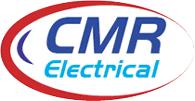 Add My Company
Add My Company

In today’s rapidly evolving technological landscape, server rooms play a crucial role. They maintain the functionality of various organizations, from small startups to large enterprises. With numerous servers and networking equipment running continuously, maintaining proper temperature regulation in the server room becomes crucial. It prevents hardware failures, downtime, and potential data loss. One of the key tools in achieving this goal is the optimal placement of temperature sensors in a server room. This blog post delves into the significance of temperature sensors. It also offers insights into their optimal placement, enabling effective monitoring and management.
The Importance of Temperature Monitoring in Server Rooms
Temperature is a critical factor that directly impacts the performance and longevity of server hardware. Servers generate heat while processing data. Excessive room temperature can result in:
- Hardware Failures: Overheating can cause components like CPUs, hard drives, and memory modules to malfunction. This can result in system crashes or even permanent damage.
- Reduced Lifespan: Prolonged exposure to high temperatures can shorten the lifespan of server hardware. Frequent replacements will result in increased costs.
- Energy Inefficiency: Inconsistent temperatures can lead to excessive cooling efforts, resulting in higher energy consumption and operational costs.
- Downtime: When servers overheat, they might shut down automatically to prevent damage. This downtime can disrupt business operations and lead to financial losses.

We have designed our RTA2-2 Room Over Temperature Alarm to continuously monitor the temperature. An alarm triggers upon reaching the set temperature level. It’s integrated relays can activate external devices like a Building Management System (BMS); a sound repeater alarm and a SMS text messaging unit.
Optimal Placement of Temperature Sensors in a server room
To effectively monitor the temperature within a server room, it’s crucial to strategically place temperature sensors in key locations. Here are some guidelines to consider when determining the optimal sensor placement:
- Air Intake and Exhaust: Place temperature sensors near the air intake and exhaust points of server racks. This provides a clear understanding of the cooling efficiency for individual racks.
- Top, Middle, and Bottom of Racks: Position sensors at different heights within server racks to detect any temperature stratification. Hot air tends to rise, so having sensors at various levels can help identify potential hotspots.
- Hot Aisle and Cold Aisle: In rooms with hot/cold aisle containment systems, place sensors at the entrance and exit of both hot and cold aisles. This allows you to monitor the effectiveness of the cooling setup.
- Under Raised Floors: If your server room has a raised floor, consider placing sensors underneath it. This can help you monitor the temperature of the air entering the room and ensure proper airflow.
- Near HVAC Outlets: Position sensors near air conditioning vents to monitor the temperature of the air being supplied to the room. This helps ensure that the cooling system is functioning optimally.
- Adjacent to Equipment: Place sensors near particularly sensitive or critical equipment that might be prone to overheating. This provides targeted monitoring for vital hardware.
- Remote Monitoring: Utilize remote monitoring solutions that allow you to track temperature readings in real-time and receive alerts when predefined temperature thresholds are breached.
Conclusion:
Maintaining an optimal temperature within a server room is a crucial aspect of ensuring the reliability and longevity of your hardware. By strategically placing temperature sensors in key locations, you can effectively monitor the environment and take proactive measures to prevent overheating-related issues. Remember that each server room is unique, so consider the layout, cooling infrastructure, and equipment distribution when determining the best sensor placement strategy. Investing in a robust temperature monitoring system can go a long way in preventing downtime, reducing costs, and maximizing the efficiency of your server room operations.
For more information on OPTIMAL PLACEMENT OF TEMPERATURE SENSORS IN A SERVER ROOM talk to CMR Electrical
